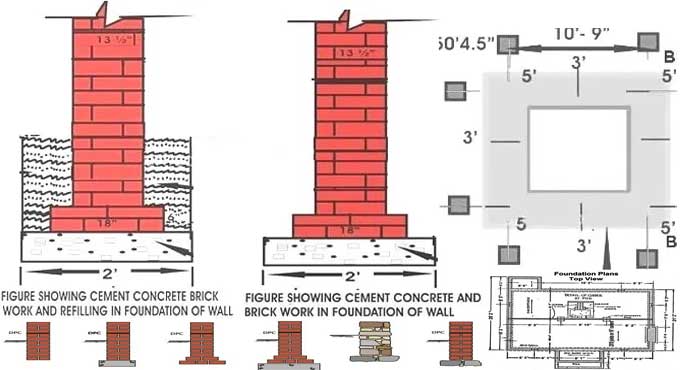NEWS | SOFTWARE | SHEET
The Importance of Good Foundation Plans for Home Design Architects
Construction projects cannot be successfully executed without foundation plans. It is important to note that without a strong, solid, and durable foundation, any building will be unreliable and dangerous, not to mention that it will not last very long. Wind, rain, and earthquake resistance are critical for foundations.
Define Foundations
In addition to treated wood posts or piers, concrete or rock pads may also be used to build foundations. Buildings near or on bodies of water or in flood prone areas typically use posts and piers. You risk expensive repairs, modifications, or foreclosure if you do not invest in a solid foundation plan. In the absence of a solid foundation, the base, support beams, and walls will follow, creating a domino effect.
Define Foundation Plan
Plans of a building's foundation show the walls of the foundation from the top. According to the plot, floor, and elevation plans, experienced architectural construction design experts draw the plans. A foundation plan shows the following: Location and area, height, width, girders, beams, and columns.
As part of the construction documentation, foundation plans are used primarily by the construction crew. These specialized foundation plans are usually developed by a structural engineer, who studies the ground beneath the foundation and the materials used for the foundation in-depth.
Basic Materials for Foundations
Concrete blocks, bricks, or masonry are common materials used for foundation construction. Compared to metal and wood, masonry materials are more resistant to soil and moisture damage.
Building materials are often protected from moisture and other risky effects by masonry foundations that extend over the ground. Metal rebar or other materials are often used to reinforce masonry foundations.
There are several types of foundations, but most are resting on concrete or rock pads or are driven deeply into the ground. When building near or on water or near flood-risk areas, piers and posts are often used. Inorganic material laid underneath the foundation's base is one of the most crucial components.
Foundation Depth Factors
Ground Water Table
As a soil study usually includes the depth of the groundwater table, the type of foundation and how deep it can be built can be dictated by a high groundwater table.
Soil Bearing Capacity
Based on the soil bearing capacity, one can determine how much load, force, or weight will be borne by the soil under consideration.
Soil Type
Soils of different types have different properties that can affect their suitability to support foundations.
Frost Depth
During the coldest times of the year, the ground freezes to a depth called Frost Depth. For different foundation types, the frost depth is usually used to identify the minimum depth.
Minimum Depth
Despite ground level variations and topsoil removal, the minimum depth of a foundation is typically 18 inches.
Load Transfer of Foundation
A foundation must not exceed the soil's bearing capacity & you have to ensure that the building load is transferred uniformly to the ground.
Every movement of the foundation is controlled to avoid structural damage by considering the estimated settlement of the building. Construction strategies are determined by examining the foundation's overall design, ground characteristics, and superstructure.
Foundation Plan Design Steps
- The location and scale of the foundation drawing can be customized.
- Draw the foundation walls, columns, and piers based on the floor plan.
- You can use the breaks in the walls to identify access holes, vents, windows, and doors.
- It is possible for you to plan your foundation walls, the foundations for the columns and piers at the bottom, and the fireplaces and chimneys above.
- If necessary, use the centerline symbol to draw the supporting beam.
- Floor joists or trusses should be displayed with their size, spacing, and direction.
- You might want to letter the required notes and shade the wall drawings if they are necessary.
To get more details, go through the following video tutorial.
Lecturer: Structures Explained
Difference between Basement Plan & Foundation Plan
Since both drawings follow the same procedure, it is easy to confuse foundation and basement plans. In order to build a foundation, foundation plans provide essential information. Among the services provided by basement plans are floor plans, foundation plans, windows, doors, stairs, and built-in fixtures.
Plan everything from top to bottom when it comes to home design and architecture. In order to determine the sizes of rooms, structural elements and room layouts must be considered. As the support for the entire structure, the foundation is an essential part of the overall house design.
In addition to understanding foundation requirements from the depth of the foundation to the materials used and the load transfer, home design, and architecture firms can use foundation plans. Solid foundations are essential to the long term stability of your home.


